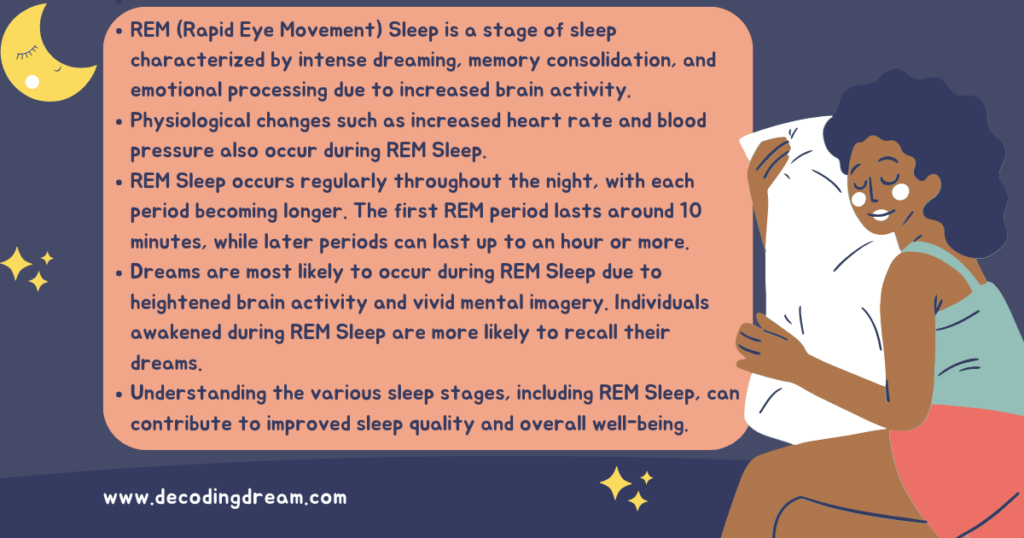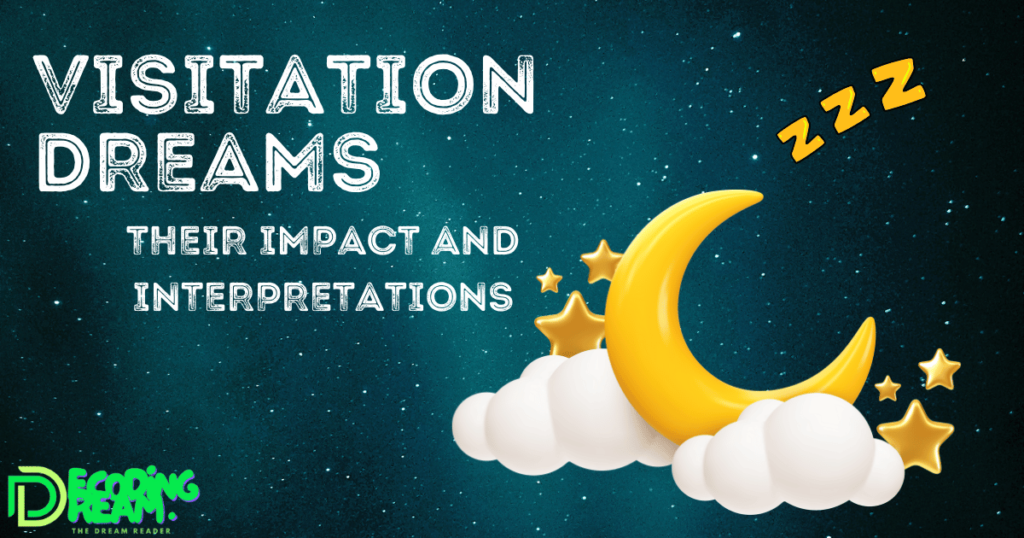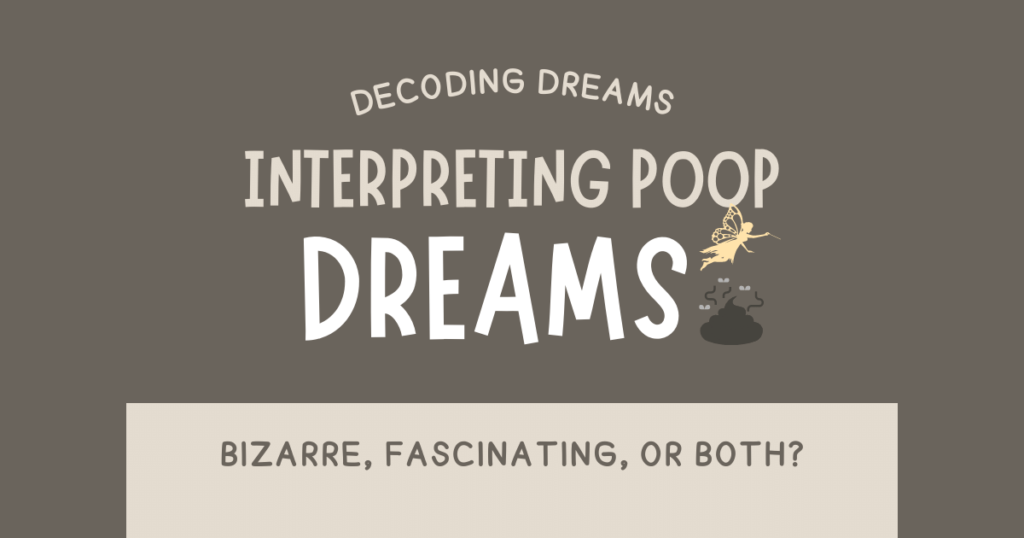
Dreams have fascinated humans for centuries, prompting curiosity and wonder. This exploration delves into the intriguing realm of dream theories and insights from dream experts. Revealing various perspectives and interpretations, we seek to shed light on the enigmatic nature of our dreams. With convincing facts and expert opinions, this section delves into the depths of our subconscious minds, aiming to unravel the mysteries within our nocturnal adventures.
Dream Theories
Dream theories have been a subject of fascination and exploration by both scientists and psychologists. Various theories attempt to explain dreams’ complex nature and significance in our subconscious mind. These theories delve into areas such as the interpretation of dream symbols, the role of emotions in dreams, and the relationship between dreams and memories.
One popular theory suggests that dreams process emotions and experiences from our daily lives. They provide an outlet for unresolved issues or repressed desires, allowing us to work through them unconsciously. Another theory proposes that dreams display our unconscious thoughts and desires, providing insight into our true selves.
Some theories suggest that dreams have evolutionary functions. They may simulate potential situations or threats, helping us develop problem-solving skills or prepare for future challenges. Other theories posit that dreams are simply random firings of neurons during sleep, with no specific purpose or meaning.
While these theories offer different perspectives on the nature of dreams, none can be definitively proven or disproven. The study of dreaming continues to be an area of active research and debate among experts in the field.
It is important to note that individual experiences with dreaming can vary greatly, making it difficult to formulate a single comprehensive theory. Dreams are deeply personal and influenced by various factors such as personal history, culture, and psychological state.
In understanding dream theories, it is essential to approach them with an open mind and recognize the complexity and intricacy of the human mind. By exploring different perspectives and engaging in further research, we can continue to expand our understanding of the fascinating world of dreams.
Dream Expert
Dreams have fascinated humans for centuries, leading to the study of dream theories and the emergence of experts in the field. These professionals, often called Dream Experts, possess extensive knowledge and understanding of dreams and their significance.
They deeply understand various dream theories proposed by psychologists and researchers. Dream Experts can analyze dreams and provide interpretations based on symbolism, personal experiences, and cultural context. They are knowledgeable about the different stages of sleep, such as REM (rapid eye movement) sleep and NREM (non-rapid eye movement) sleep, which are directly related to dream occurrence.
These experts can explain how long dreams typically last during each stage of sleep. They are well-versed in interesting dream facts, such as recurring themes or typical imagery. Dream Experts understand the potential connection between dreaming and sleep disorders, providing insights into possible causes or effects.
In addition to these points, Dream Experts also possess historical and cultural perspectives on dreams. They know how interpretations of dreams vary across different periods and societies. This expertise allows them to explore the broader cultural significance of dreams while evaluating individual experiences.

Overall, Dream Experts play a crucial role in unraveling the mysteries behind our nocturnal visions. Their wealth of knowledge helps individuals gain insights into their dreams and contributes to ongoing research in the field. By expanding our understanding of dreams, Dream Experts improve dream recall and enhance sleep quality for individuals seeking deeper connections with their subconscious minds.
Dreams: the free, nocturnal entertainment that can leave you wondering if your mind is truly as twisted as it seems.
What are dreams?
Dreams are complex and mysterious psychological phenomena that occur during certain stages of sleep. They combine images, emotions, sensations, and thoughts that seem to have their reality while we sleep. Dreams can range from vivid and memorable to fleeting and forgettable experiences. They often reflect our desires, fears, and experiences from our waking and subconscious states.
During the REM (rapid eye movement) stage of sleep, which is when most dreaming occurs, our brain becomes highly active, and our body undergoes various physiological changes. This suggests that dreams serve a purpose in our brain’s processing and consolidation of information. They may play a role in memory consolidation, emotional regulation, problem-solving, and creativity.
Interestingly, dreams can vary in length. While they may appear to last for a significant amount of time, research suggests that dreams typically last for about 20-30 minutes. However, some dreams can be completed within a few seconds, while others may feel like they go on for hours. This perception of time during dreaming is subjective and can vary from person to person.
As with many aspects of sleep and dreaming, much remains unknown about dreams’ exact nature and purpose. Scientists continue to study and explore the fascinating world of dreams to unravel their complexities and better understand their role in our lives.
True History:
Throughout history, dreams have captivated the human imagination. Ancient civilizations believed dreams were messages from the gods or portals to the spirit world. They were seen as significant and often interpreted as omens or premonitions. Many cultures developed elaborate practices and rituals to seek guidance or divine meaning through their dreams.
In modern times, psychologists and neuroscientists have delved into the scientific study of dreams, attempting to unravel their mysteries. Sigmund Freud, the father of psychoanalysis, proposed that dreams were a window into our unconscious desires and fantasies. His theories sparked much interest and debate, influencing the field of dream interpretation.
Today, technological advancements in brain imaging and sleep research have allowed scientists to gain further insights into the intricate workings of the dreaming brain. These advancements have paved the way for a more scientific understanding of dreams, although many questions still remain unanswered.
Dreams continue to be a source of intrigue and fascination, providing a glimpse into the depths of our minds and offering a unique avenue for exploration and self-discovery.
How long do dreams last?
Dreams have fascinated mankind for centuries. In this section, we’ll uncover the answer to the burning question: How long do dreams last? By exploring the different stages of sleep, such as REM sleep and NREM sleep, we’ll uncover intriguing insights into the duration and nature of our dream experiences. Get ready to dive into the mysterious realm of dreams and uncover the fascinating timelines that govern them.
REM Sleep
During REM Sleep, the brain becomes more active, and intense dreaming occurs. It is believed to be involved in memory consolidation and emotional processing. This stage is also associated with increased brain activity in visual processing and emotional regulation areas. In addition to rapid eye movements, other physiological changes, such as increased heart rate and blood pressure, may occur.
A unique characteristic of REM Sleep is that it occurs regularly throughout the night, with each REM period becoming longer as the night progresses. The first REM period usually lasts around 10 minutes, while subsequent periods can last up to an hour or more. This cycling between REM and Non-REM Sleep is necessary for overall sleep quality and restoration.
One fascinating aspect of REM Sleep is its connection to dreaming. Dreams will most likely occur during this stage due to heightened brain activity and vivid mental imagery. While not all dreams are remembered upon waking up, studies have shown that individuals awakened during REM Sleep are more likely to recall their dreams than those awakened during non-REM Sleep. This suggests a strong link between REM Sleep and dream recall.

Overall, REM Sleep plays a crucial role in our sleep cycle by providing vital functions and facilitating dreaming experiences. Understanding the various sleep stages can improve our overall sleep quality and well-being.
NREM Sleep: Where dreams are a little too shy to make an appearance, leaving you feeling a bit empty, like chasing after a unicorn that forgot to leave a trail of glitter.
NREM Sleep
NREM sleep, also known as Non-Rapid Eye Movement sleep, is a stage of sleep that occurs after falling asleep and before entering into REM sleep. During this stage, the brain slows down its activity, and eye movements are minimal. This is when the body enters a deep and restorative sleep.
NREM sleep can be divided into four stages: Stage 1, Stage 2, Stage 3, and Stage 4. Each stage represents a different level of sleep depth, with Stage 1 being the lightest and Stage 4 being the deepest. As we progress from Stage 1 to Stage 4, our brain waves slow down even more, making it increasingly difficult to wake up.
During NREM sleep, several essential processes take place in the body. This includes cellular repair and regeneration, memory consolidation, hormone release, and tissue growth. It is also believed that NREM sleep plays a crucial role in maintaining immune function and overall physical health.

One interesting fact about NREM sleep is that it typically takes up approximately 75% of a complete sleep cycle. This means most of our sleep is spent in NREM rather than REM sleep. Further, dreams are less common during NREM sleep compared to REM sleep.
Dreams are like mini-movies directed by our subconscious mind, only weirder and with no popcorn.
Interesting facts about dreams
Dreams are intriguing phenomena that have fascinated humans for centuries. One interesting fact about dreams is the question of how long they last. According to a reference article titled “How long do dreams last? Interesting facts,” the duration of a dream can vary.
Some dreams can feel like they last for hours, while in reality, they only last for a few minutes. This can be attributed to the altered perception of time during dreaming.
Continuing on this topic, it is worth noting that dreams often occur during the rapid eye movement (REM) stage of sleep. Our brain becomes highly active during this stage, making dreams more vivid and memorable. Scientists have discovered that dreams can be experienced in seconds by studying brain activity during REM sleep. This phenomenon contributes to the perception that dreams last longer than they do.
In addition to the duration of dreams, an interesting detail is that we typically have multiple dreams throughout the night. As we progress through the sleep cycles, REM sleep periods become longer, allowing more opportunities to dream. This explains why we often wake up with vivid memories of different dreams that may have occurred during various sleep stages.
One fact worth highlighting is that dreams have been the subject of scientific inquiry for many years. Researchers have conducted numerous studies to understand dreams’ purpose and significance better. Through various methods, such as brain imaging and dream analysis, scientists continue to unravel the mysteries of the dreaming mind. As the field of dream research evolves, we can look forward to gaining further insights into this fascinating aspect of human consciousness.
Common dream meanings
Dreams have various meanings that can provide insight into our subconscious. They serve as a medium for our minds to process emotions, experiences, and desires. Understanding common dream meanings can help decipher hidden messages and gain self-awareness. Here are six points that explore the different interpretations of dreams:
- Flying Dreams: These dreams symbolize freedom and overcoming obstacles in waking life. They often represent a desire to escape or rise above challenges.
- Falling Dreams: Falling dreams are commonly associated with insecurity, instability, or a lack of control. They can reflect anxieties or fears about failure, loss, or being overwhelmed.
- Being Chased Dreams: This dream theme represents a sense of urgency or pressure in waking life. It may suggest that you feel pursued or threatened by a situation or person, prompting a need to confront or address the underlying issues.
- Teeth Falling Out Dreams: Dreams about teeth falling out can indicate concerns about appearance, communication, or the ability to express oneself effectively. They can also point to feelings of powerlessness or a loss of confidence in some aspects of life.
- Naked in Public Dreams: These dreams often signify vulnerability or fear of exposure. They may reflect concerns about judgment, acceptance, or social pressures. Such dreams can also represent a desire for authenticity and acceptance of oneself.
- Being Lost Dreams: Dreaming of being lost reflects feelings of confusion, uncertainty, or a lack of direction in waking life. It may suggest a need for guidance or a desire to find one’s purpose.
Beyond these common dream meanings, dreams are highly personalized and can have unique interpretations based on an individual’s experiences, emotions, and circumstances. Exploring dreams can provide valuable insights that may lead to personal growth, self-reflection, and understanding.
In line with the topic of dream meanings, a true story illustrates the impact dreams can have on a person’s life. A struggling artist had a recurring dream of a vibrant cityscape. Inspired by this dream, he created a series of paintings depicting the city. The artwork gained recognition, leading to a successful exhibition and numerous commissions. This story highlights how dreams can catalyze creativity and unexpected opportunities.
Dreams offer a glimpse into the complexities of the human mind and can hold profound meanings. Understanding common dream interpretations and delving into their significance allows individuals to explore their subconscious and gain self-awareness. Dreams can unlock creativity, inspire individuals, and guide in navigating life’s challenges.
Dreaming and sleep disorders
Dreaming and sleep disorders are closely related. Sleep disorders can affect the duration and quality of dreaming. Researchers have found that certain disorders like insomnia and obstructive sleep apnea can disrupt the normal sleep cycle, leading to a decrease in REM sleep, which is the stage of sleep when dreaming occurs. This disruption can result in fewer and shorter dreams.
Furthermore, studies have shown that individuals with certain sleep disorders, such as narcolepsy, may experience more vivid and intense dreams. Narcolepsy is a neurological disorder characterized by excessive daytime sleepiness and sudden episodes of sleep. These sleep episodes can occur even during activities such as driving or working, often accompanied by vivid dreaming.

In addition, sleep disorders can also cause an increase in nightmares. Conditions like post-traumatic stress disorder (PTSD) or sleep-related eating disorder can trigger terrifying and distressing dreams. Nightmares can be so vivid and realistic that they disrupt sleep and negatively impact a person’s overall well-being.
In summary, dreaming and sleep disorders are intricately connected. The disruptions in the sleep cycle caused by sleep disorders can lead to changes in the duration, intensity, and content of dreams. Understanding and addressing sleep disorders is essential to improve overall sleep quality and minimize the impact on dreaming.
Historical and cultural perspectives on Dreams
From historical and cultural perspectives, dreams have been a subject of fascination and interpretation throughout the ages. Ancient civilizations such as the Egyptians and Greeks believed dreams held significant meaning and could foretell the future. They believed that dreams were messages from the gods and used various methods to analyze and interpret them. Similarly, many indigenous cultures worldwide have long believed that dreams are a way for the spirit world to communicate with the living.
Throughout history, dreams have been seen as portals to the subconscious mind. The renowned psychoanalyst Sigmund Freud developed the theory that dreams were a window into the unconscious, containing hidden desires, fears, and unresolved conflicts. He believed individuals could gain insight into their deepest thoughts and emotions by analyzing dream symbols and themes.
Dreams have also played a significant role in religious and spiritual practices. In some cultures, dreams are seen as divine messages or visions. In ancient texts such as the Bible, numerous accounts of dreams communicate important messages or prophecies. Even today, many individuals turn to their dreams for guidance or a deeper understanding of their spiritual path.
Understanding the historical and cultural perspectives on dreams allows us to appreciate the significance and complexity of this universal human experience. By exploring the interpretations and beliefs of different cultures throughout time, we can gain a broader insight into the power and meaning behind our dreams.
Don’t miss out on the incredible depth and richness that dreams have to offer. Take the time to explore their historical and cultural significance and unlock the hidden messages that may be waiting for you. Embrace the mystery and wisdom that dreams hold, and let them guide you on your journey of self-discovery and personal growth. Don’t let the opportunity to explore the fascinating world of dreams pass you.
Conclusion
Dreams have fascinated humans for centuries, and many questions surround their nature and duration. Research suggests that dream duration can vary significantly when considering how long dreams last. According to the reference data, dreams can range from a few seconds to up to 45 minutes in duration. This wide range shows that dream length is not uniform and can vary based on factors such as sleep stage, dream intensity, and the individual’s overall sleep quality.
The duration of dreams is influenced by the sleep stages in which they occur. As mentioned in the reference data, dreams primarily occur during Rapid Eye Movement (REM) sleep, characterized by heightened brain activity and vivid dreaming. REM sleep episodes occur multiple times throughout the night, typically lasting longer as the night progresses. This suggests that dreams may become longer and more complex as the sleep cycle progresses.
The intensity of dreams can impact their duration. The reference data does not mention this, but previous research suggests that emotionally charged or significant dreams may feel longer than they are. Intense dreams often leave a lasting impression and may feel more vivid and prolonged in the individual’s memory.
It is important to note that individual sleep patterns and overall sleep quality also affect dream duration. The reference data indicates that interrupted or poor-quality sleep can negatively impact dream duration. Stress, anxiety, or other external factors that disrupt sleep can lead to shorter dreams or difficulties in recalling them.
Recommendations for improving dream recall and quality of sleep
Dream recall and sleep quality can be improved through specific practices and habits. These recommendations can help individuals enhance their ability to remember dreams and ensure a better sleep experience.
- Establish a consistent sleep routine: Going to bed and waking up simultaneously daily helps regulate the sleep cycle, allowing for more restful sleep and increased dream recall.
- Create a comfortable sleep environment: Ensure the bedroom is quiet, dark, and comfortable. This promotes a relaxing atmosphere conducive to deep sleep and vivid dreaming.
- Manage stress levels: High-stress levels can negatively impact sleep quality and dream recall. Meditation, breathing exercises, and journaling can help reduce stress and promote better sleep.
- Avoid stimulants and electronics before bed: Consuming caffeine or engaging with electronic devices close to bedtime can interfere with sleep patterns and disrupt dream recall. Opt for relaxing activities like reading or listening to calming music instead.
- Practice dream journaling: Keeping a dream journal by the bedside and recording dreams immediately upon waking can enhance dream recall over time. This habit helps train the brain to remember dreams and can provide valuable insights into one’s unconscious mind.
In addition to these recommendations, it is important to note that individuals may experience variations in dream recall and sleep quality due to age, overall health, and medication use. Consulting with a healthcare professional can provide personalized guidance and support in improving dream recall and sleep.
A fascinating fact about dreams is that they can occur during various stages of sleep. Still, the most vivid and memorable dreams often happen during the rapid eye movement (REM) stage. This stage is characterized by increased brain activity and rapid eye movements. So, when dreaming occurs, it is often during REM sleep.
Some Interesting Facts
- ✅ Dreams can last between 5 and 45 minutes. (Source: Sleep Junkie)
- ✅ Adults can dream between four and six times a night. (Source: Sleep Junkie)
- ✅ Dreams occur during REM sleep, where the body is paralyzed, but the brain remains active. (Source: Sleep Junkie)
- ✅ The purpose of dreams is still unknown, but theories suggest they may serve to process intense emotions or consolidate information for long-term memory. (Source: Sleep Junkie)
- ✅ Sleep cycles last about 90 minutes; adults need five to six cycles per night for seven to nine hours of sleep. (Source: Sleep Junkie)
FAQs
How long do dreams typically last?
Dreams typically last between five and 20 minutes, with each dream cycle lasting approximately two hours. During this time, individuals may have four to six dreams per night.
Do men and women experience different types of dreams?
Yes, men and women may have different types of dreams. Men’s dreams often involve physical activity, while women’s dreams tend to focus more on exclusion and conversation.
Can external stimuli affect the content of dreams?
Yes, factors like anxiety, stress, and external stimuli can impact the emotional content of dreams. These influences can shape individuals’ themes and experiences in their dreams.
Why do we forget most of our dreams?
Approximately 95% of dreams are forgotten due to the inactive function of memory formation during REM sleep. The sound of an alarm or distractions upon waking can prevent dream recall.
Is it possible to control your dreams?
Yes, lucid dreaming allows individuals to be aware of their dreaming state and have control over various aspects of the dream. People can learn how to manipulate their dreams within the dreamscape with practice.
Do animals dream?
Yes, animals also dream. This can be observed through their movements while asleep. Like humans, animals may experience dream cycles and unconscious mental activity during sleep.







2 Comments